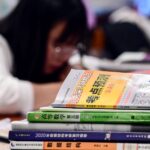Australian universities are expecting an influx of students from Singapore in their next global student drive, following the establishment of the Singapore-Australia Comprehensive Strategic Partnership.
The partnership, which will see the two governments embark on a 10-year plan to enhance their strategic, trade, economic and networking relations, will also result in greater recognition of Australian qualifications in law, medicine and allied health from Singapore’s higher education providers.
Details of the agreement were announced earlier this month and are expected to address the rising skills gap in Singapore’s law, medicine and health sectors, as well as to promote diversity within the region’s workforce.
#Singapore: More students expected to choose Australian universities. https://t.co/LK1ZNHORBG #highered #Australia #internationaled
— UniversityWorldNews (@uniworldnews) May 20, 2016
The Australian Department of Foreign Affairs and Trade claims the partnership will enhance the integration of both region’s economies “in order to achieve a Closer Economic Relationship (CER)”, and that the two countries plan to particularly accelerate “collaboration in innovation, science, research and technology”, which will capitalise on their “respective and complementary strengths”.
Last year, Australia’s 1,100 accredited universities played host to 8,165 Singaporean students, with companies like IDP Education, a world leader in international student placement services, successfully placing 1,500-2,000 students anually.
But with the formulation of the Singapore-Australia partnership, IDP Education is expecting placement numbers to significantly increase, with IDP professionals claiming there has been particular interest from Singapore-based students in areas such as physiotherapy, occupational therapy and speech therapy.
Read our newest Analysis on the Australia-Singapore strategic partnership: https://t.co/8ilh8DDrmu pic.twitter.com/lnA5Tw7hdA
— The Lowy Institute (@LowyInstitute) May 16, 2016
Consequently, the Singapore government has agreed to acknowledge 15 undergraduate and postgraduate degrees in these fields from a number of Australia’s world-class universities, including La Trobe University, Curtin University, the University of South Australia and the University of Queensland in order to instil Singapore students with expertise their home economy demands, as well as to greatly boost their available career opportunities.
The current situation means that any Singapore national hoping to pursue a course in therapy, for example, would have to undertake a degree with a local, collaborative university that merges the Singapore Institute of Technology with Trinity College Dublin.
“These courses have always been popular, in demand from Singapore [students]. We are [facing] an ageing population, so we do get a lot of students who want to practise in all these areas,” Mr Daryl Fong, Country Director of IDP Education, told Channel News Asia.
Singapore’s High Commissioner to Australia on the CSP: https://t.co/c3rzZOaDsl
— Euan Graham (@graham_euan) May 11, 2016
“It would be very good for students to be enrolled in these programmes and also come back to practise these programmes. The numbers will increase because I think not many of them are aware about it and they have probably missed this year’s enrolment and application, so probably in the next couple of years, [there will be an increase of] at least five to 10 percent per year [in these courses],” he concludes.
Graduates of these courses are expected to boost flagging healthcare recruitment in the Singapore economy, as the country’s Health Ministry works hard to increase national employment numbers.
The healthcare workforce has already expanded from 46,000 in 2011 to 57,000 in 2015, just 55 per cent of the projected increase in professionals needed between 2011 and 2020, Channel News Asia reports.
Image via Flickr.
Liked this? Then you’ll love these…
Australia launches blueprint to expand international education sector
Australia announces Show & Tell contest winners to promote student mobility







